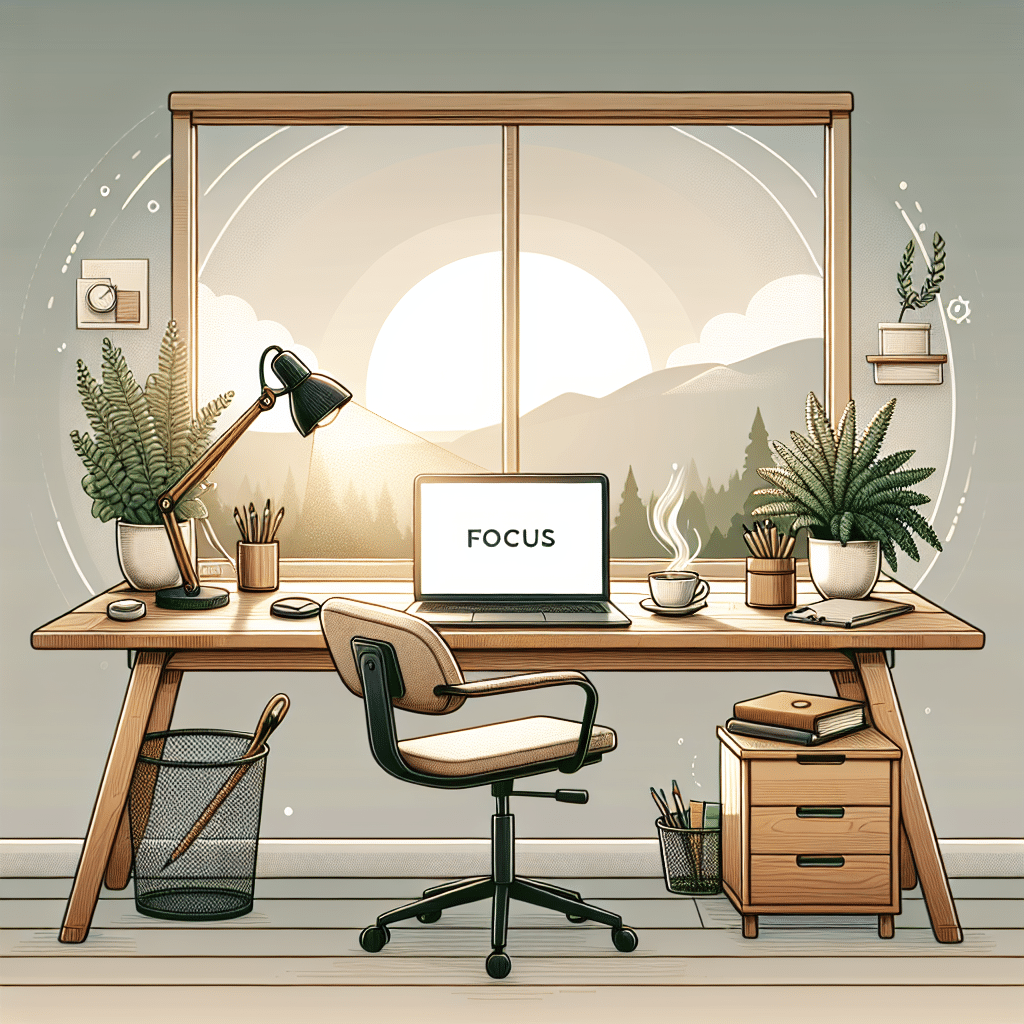Creating a Comfortable Workspace for Focus: The Ultimate Guide
1. The Importance of a Comfortable Workspace
A well-designed workspace is crucial for enhancing productivity and focus. A comfortable environment significantly impacts your ability to concentrate and perform effectively. Numerous studies show that individuals in comfortable, organized spaces are more productive and experience lower stress levels.
2. Ergonomic Furniture Choices
Choosing ergonomic furniture is the first step to create a comfortable workspace.
-
Office Chair: Invest in an ergonomic office chair that supports the natural curvature of the spine. Look for adjustable features, including seat height, backrest angle, and lumbar support. This ensures proper posture, reducing the risk of back pain and discomfort.
-
Desk Height: Your desk should accommodate your height, allowing your elbows to form a 90-degree angle. Consider a height-adjustable desk that can transition between sitting and standing, promoting healthier movement throughout your workday.
-
Keyboard and Mouse: Use an ergonomic keyboard and mouse to minimize strain on your wrists. A wrist rest can further enhance comfort when typing for extended periods.
3. Ideal Workspace Location
Selecting the right location for your workspace is essential for minimizing distractions.
-
Natural Light: Position your desk near a window to benefit from natural light. Studies have shown that exposure to daylight boosts mood and energy levels. If natural light is limited, consider using full-spectrum lighting.
-
Quiet Zone: Choose a location away from high-traffic areas in your home or office. Consider noise-canceling headphones if your environment can’t be quieted.
-
Private Space: If possible, designate a specific room or corner for work. This separation helps establish a mental barrier between work and personal life, improving focus.
4. Decluttering Your Environment
A cluttered workspace can lead to distraction and reduced focus.
-
Organized Desk: Keep your desk clean and organized. Use drawer organizers or desktop storage solutions to minimize clutter. Only keep essential items within reach.
-
Digital Declutter: Regularly organize your digital files. Having a chaotic digital workspace can be just as distracting as a cluttered physical environment.
-
Minimalist Approach: Embrace minimalism in your workspace design. Limit decorations and personal items that don’t contribute to your productivity, creating an uncluttered aesthetic.
5. Personalizing Your Workspace
Adding personal touches to your workspace can enhance your comfort and motivation.
-
Inspiring Artwork: Hang artwork or motivational quotes that inspire you. Choose pieces that resonate with your personal values or aspirations.
-
Plants and Greenery: Incorporate plants into your workspace. Research indicates that indoor plants can improve air quality and increase feelings of well-being.
-
Comfort Items: Personalize your space with items that bring you comfort, such as a cozy throw blanket, a favorite mug, or family photos.
6. Setting Up Technology for Focus
Technology plays a vital role in our workspaces, and optimizing it can lead to a more focused environment.
-
Multiple Monitors: If your work involves extensive data analysis or design, consider using multiple monitors. This setup improves workflow and reduces the need to switch between applications.
-
Cable Management: Tidy up cables with clips or sleeves to avoid visual clutter. A well-managed workspace helps eliminate distractions caused by messiness.
-
Software Tools: Utilize productivity tools and apps that promote focus, such as Pomodoro timers, to-do lists, or project management software. These can help you prioritize tasks effectively.
7. Creating a Distraction-Free Environment
Minimizing distractions is essential for sustained focus.
-
Noise Control: Use white noise machines or apps that generate background noise to mask distractions. This can help create an auditory barrier against sudden interruptions.
-
Limit Notifications: Disable non-essential notifications on your devices during work hours. Consider using ‘Do Not Disturb’ modes to help maintain your focus.
-
Set Clear Boundaries: Communicate your work hours and boundaries to others in your space. Let family or roommates know when you are in “work mode” to minimize interruptions.
8. Incorporating Break Areas
Finding balance is crucial for maintaining focus.
-
Dedicated Break Area: Establish a specific area for breaks away from your workspace. Use this space to relax, stretch, or take brief walks, which can boost your energy and creativity.
-
Scheduled Breaks: Implement the Pomodoro Technique, which encourages short breaks after periods of focused work. This method balances work and rest effectively, improving long-term productivity.
9. Ambient Considerations
Creating the right atmosphere can significantly influence focus and comfort.
-
Temperature Control: Ensure your workspace is at a comfortable temperature. Use fans or heaters as needed to maintain optimal working conditions.
-
Aromatherapy: Consider using essential oils or scented candles, such as lavender or lemon, which can help boost concentration and reduce stress.
-
Soundscapes: Experiment with ambient music or soundscapes that enhance focus. Some people may prefer instrumental music, while others might find nature sounds more conducive to concentration.
10. Regularly Updating Your Workspace
Finally, reevaluating your workspace regularly is key to maintaining an effective work environment.
-
Assess Comfort: Periodically check to ensure your furniture and equipment still meet your ergonomic needs. As you grow or change in your profession, your equipment may need adjustments.
-
Stay Inspired: Change decorations, rotate artwork, or update your plants to keep the workspace fresh and inspiring. Small changes can lead to increased motivation.
-
Feedback Loop: Be open to feedback from colleagues (if in a shared space) about your workspace. Sometimes an outsider’s perspective highlights potential improvement areas.
By focusing on these varied aspects of your workspace, you can create an environment that not only enhances comfort but also boosts your productivity and focus throughout your workday. Prioritizing your workspace design will lead to greater satisfaction and better performance in your tasks.
